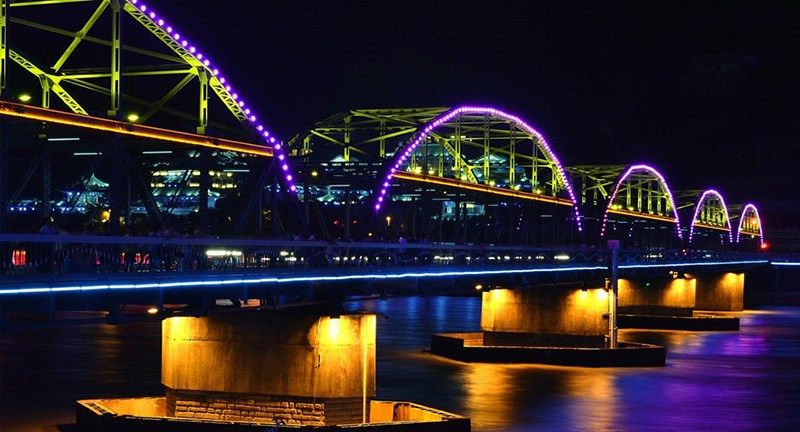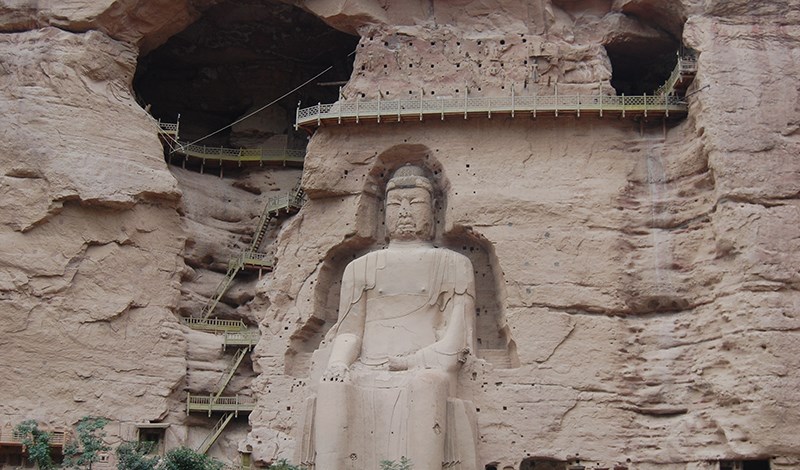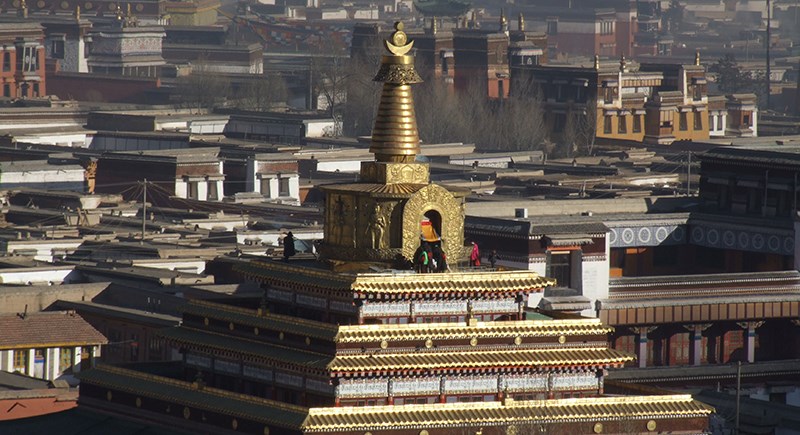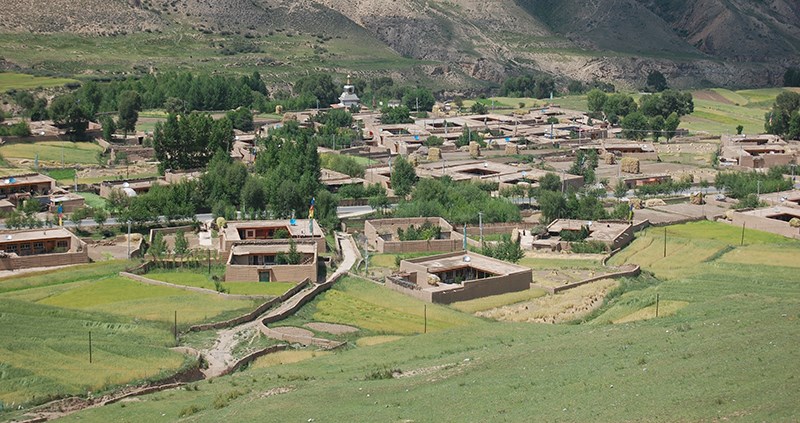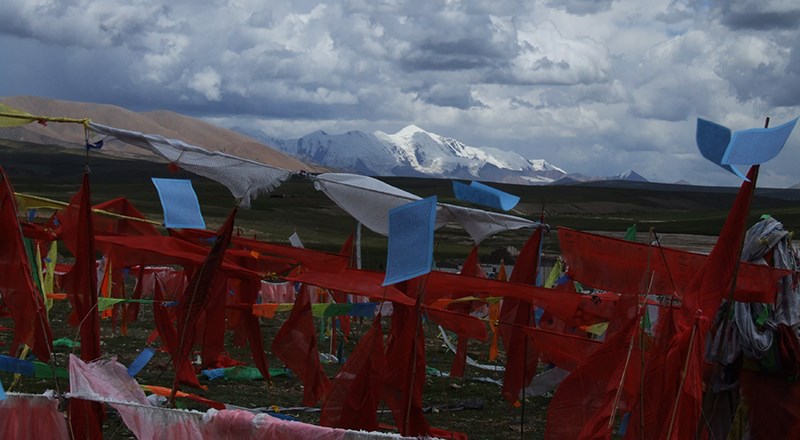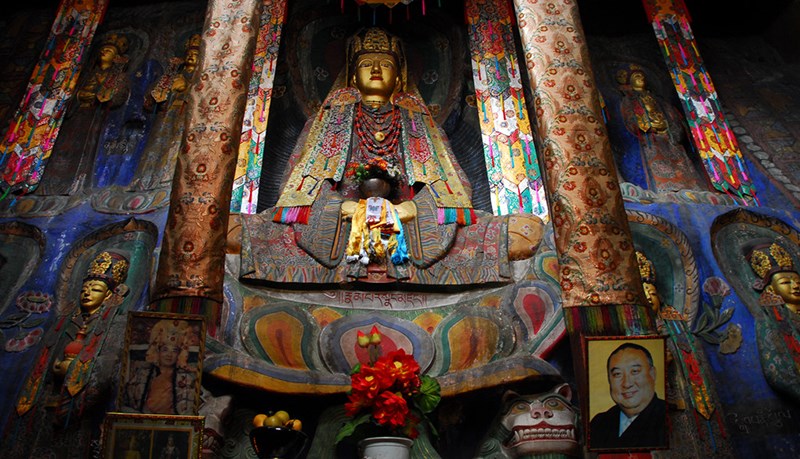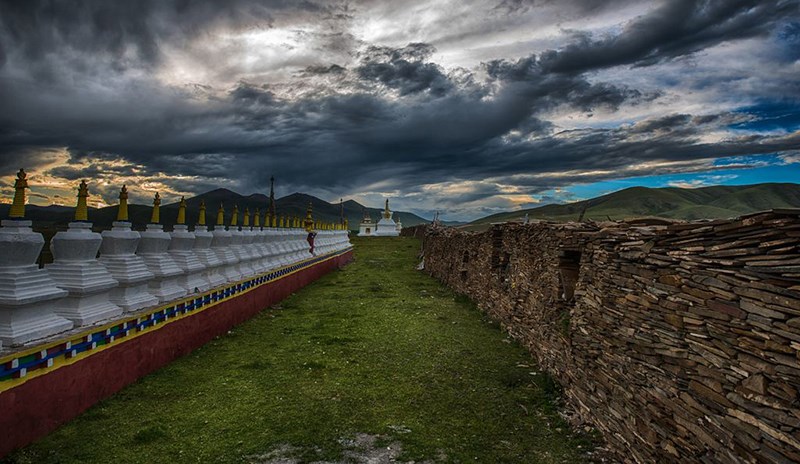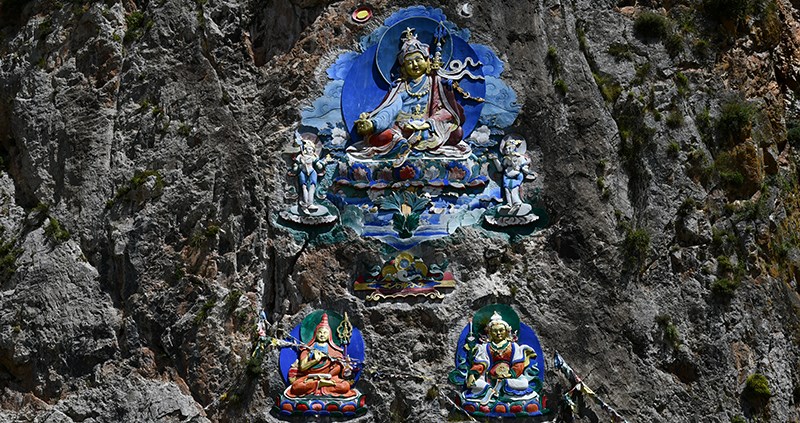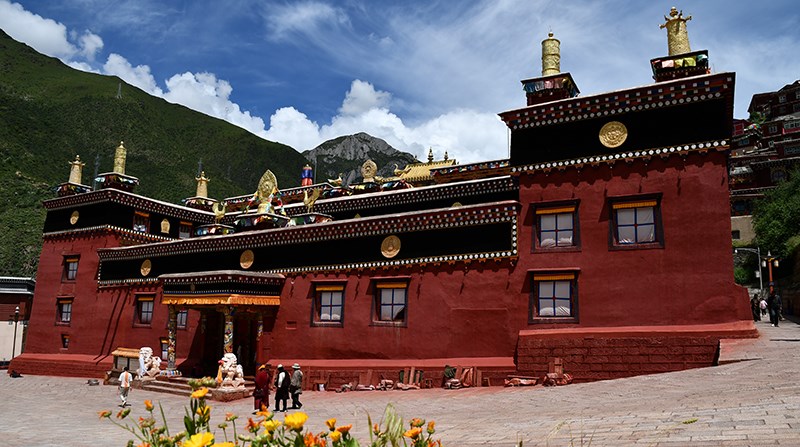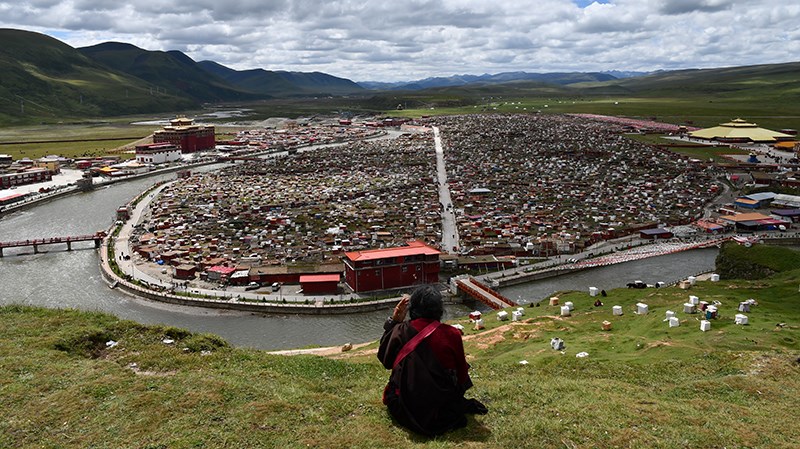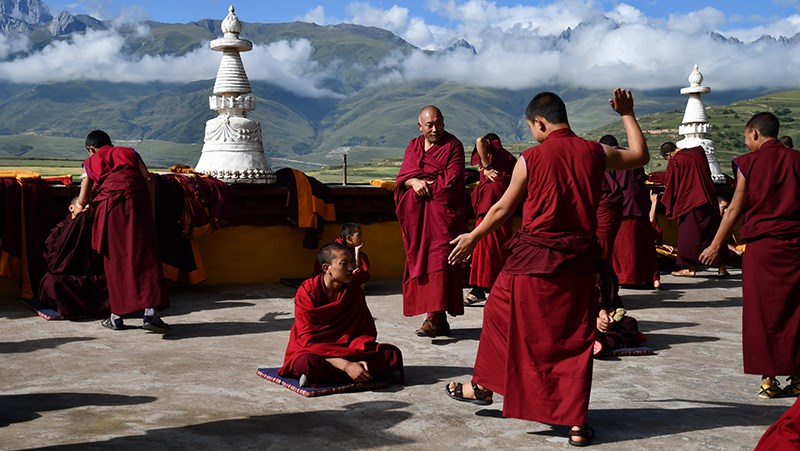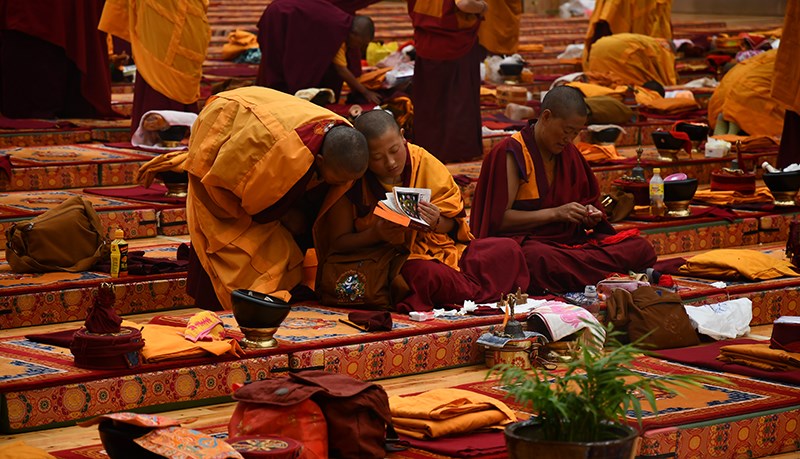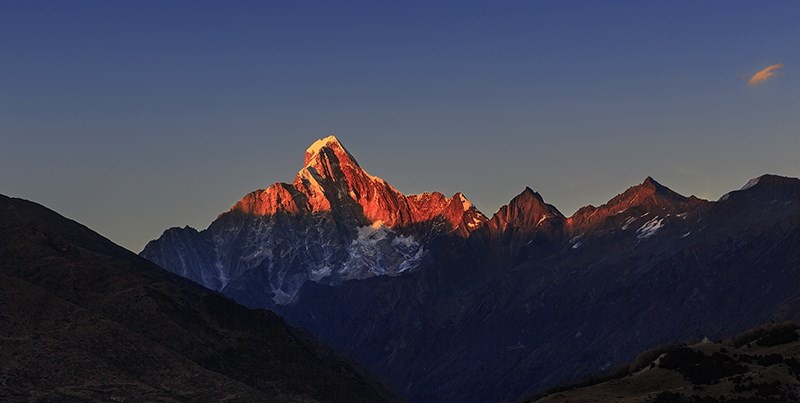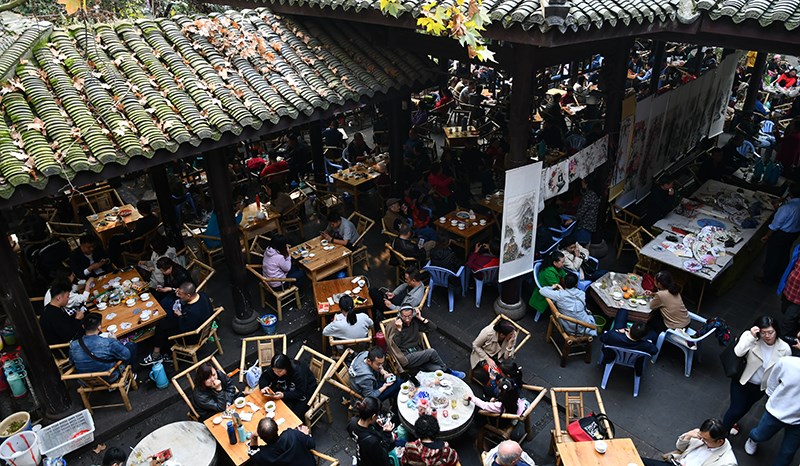14 Days Private Tour Lanzhou – Bingling Si – Xiahe – Tongren – Xining – Kumbum – Koko Nor – Madoi – Yushu – Shiqu – Dzochen – Manigango - Yilhun Lhatso – Dege – Pelyul – Yarchen Gar - Garze – Luhuo – Dawu – Bamei – Tagong - Danba – Siguniang Shan – Wolong – Chengdu
This is an adventure travel to explore the culture and nature of the Tibetan Area Amdo and Kham in provinces Gansu, Qinghai and Sichuan. Firstly, we come to Gansu Province to visit Labrang Monastery that is the culture center in Amdo Tibetan Area, and that is one of the six major monasteries of the Gelugpa Sect of Tibetan Buddhism and that is also known as the "Tibetan Academy of the World". Then we enter Qinghai Province and learn about the Regong art deeply in Tongren. Ta'er Monastery (Kumbum) must be visited where the great Master Tsongkhapa was born, who is the founder of Gelugpa sect of the Tibetan Buddhism. We pass by Riyue (Moon-Sun) Mountain, the border of agricultural civilization and nomadic civilization, to Qinghai Lake (Koko Nor), the largest inland lake in China. We continue to the south along the Tangbo Ancient Path (the way to Tibet of Princess Wencheng in Tang Dynasty), and cross the Yellow River, to Kham Tibetan Area Yushu of Qinghai Province. The Yushu Horse Racing Festival that begins on July 25 every year is the largest traditional folk festival in Qinghai Province. And then we will continue further to the south and enter Kham Tibetan area of the west Sichuan to visit the Dege Scripture Printing House, the head of the three major Tibetan cultural centers. Afterwards, we go to Baiyu along Jingsha River (the upstream of Yangtze River) to visit the magnificent Pelyul Monastery (Baiyu Si) of Nyingma Sect. The most attracting highlight is the Yarchen Gar that is the largest place for female meditation practice and where we can feel the pure religious atmosphere. We pass by Ganzi and Luhuo and drive on the China Panda Road to Tagong, which is “the Buddha's favorite place” and is also reputed as “Little Lhasa”. Following Khampa Tibetan, we turn the prayer wheel of Tagong Monastery and listen to their sounds of reading in the Gyergo Nunnery. Walk onto the hillside by the Muya Golden Pagoda and wait for the sunrise and sunset of Holy Mountain Yala. We enter the most beautiful village in China – the Jiaju Tibetan Village in Danba, where Jiarong Tibetans live. And take a walk at Siguniang Mountain, honored as “the Chinese Alps”. Besides, we closely view the cute panda in Wolong, the first panda reserve in China. Leaving Qinghai – Tibet Plateau for Chengdu Plain, we’d enjoy the leisure life in Chengdu now.
Private travel, great experiences! Please contact us for your tailor-made travel offer.
With individual China Tibet travel, you can decide when, where and how you go on tour by yourself. What's more, you can choose the length of travel and whom you go with.
Hotel, program and itinerary are subjected to change with prior notice.
We must point out that you counter a basic tourism infrastructure in this region. You stay overnight mostly at simple hotel/guesthouse. Long journeys on bad roads and on high altitude and delays require good physical fitness, resilience and flexibility of the participants. Program and route changes due to unforeseen events are expressly reserved. If you desire the unknown and have an understanding of contingency, this is the right trip for you.
Dege Printing House | Photo by Liu Bin
Dege Printing House | Photo by Dr. Ningmei Chen
Dege Printing House | Photo by Liu Bin
Dege Printing House | Photo by Liu Bin
Dege Printing House | Photo by Liu Bin
Dege Printing House | Photo by Liu Bin
Dege Printing House | Photo by Liu Bin
Pelyul Monastery | Photo by Liu Bin
Yarchen Gar | Photo by Liu Bin
Yarchen Gar | Photo by Liu Bin
Yarchen Gar | Photo by Liu Bin
Han Chinese Monastery | Photo by Liu Bin
Debate in Ganzi Monastery | Photo by Liu Bin
Ganzi Monastery | Photo by Liu Bin
Ganzi Monastery | Photo by Liu Bin
Ganzi Monastery | Photo by Liu Bin
Prayer Wheels of Tagong Monastery | Photo by Liu Bin
Jiaju Village of Danba | Photo by Liu Bin
Jiaju Village of Danba | Photo by Min Ke
Panda in Wolong | Photo by Liu Bin
